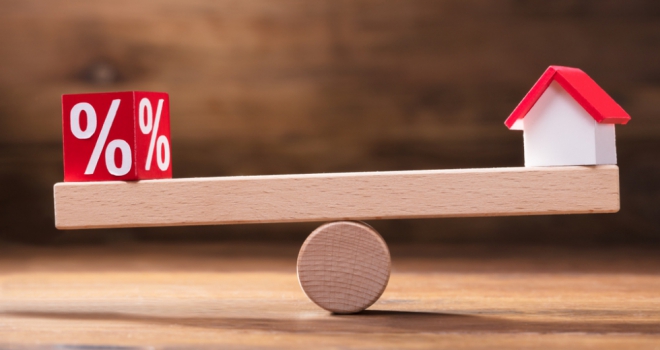Annual house price growth falls to 0.1%: Halifax
The figures show an increasingly mixed picture emerging for house prices across the UK.

"House price movements over recent months have largely mirrored the short-term volatility seen in borrowing costs."
The average house price decreased by 0.3% in April, following a 0.8% rise in March, according to the latest Halifax house price index.
As a result, the annual rate of house price growth has now slowed to 0.1% compared to 1.6% in March.
The figures show that existing property prices have fallen by 0.6% over the last year. In contrast new-build house prices continue to provide some support to the wider market, rising by 3.5% year-on-year.
The first-time buyer market is also proving to be more resilient, with average property prices up 0.7% over the last year, compared to a fall of 0.1% for home movers. Halifax says one factor behind this difference may be that with rents continuing to rise sharply, it’s becoming increasingly cost effective to purchase a home, despite the challenge of raising a deposit and higher mortgage borrowing costs.
In addition, the data shows an increasingly mixed picture emerging for house prices across the UK. The four regions of southern England have seen average house prices fall over the last year, with the South East registering the largest dip of 0.6%.
Typically, it’s these regions (including Greater London, Eastern England and the South West) where buyers face the most expensive average property prices, and therefore the biggest impact of higher borrowing costs. London continues to have the costliest homes of anywhere in the country at an average of £538,409 with annual rate of growth now -0.2%.
Elsewhere all other regions and nations across the UK saw the rate of annual property price inflation remain in positive territory during April. The West Midlands posted the strongest annual growth of 3.1%.
Northern Ireland (2.7%), Scotland (2.2%) and Wales (1.0%) have also seen average property prices increase year-on-year.
Kim Kinnaird, director of Halifax Mortgages, said: “After three consecutive months of growth, the average UK house price fell in April, down by 0.3% or around £1,000 over the month. The rate of annual house price inflation also slowed further to 0.1%, from 1.6% in March, meaning average property prices are largely unchanged from this time last year. A typical property now costs £286,896, which is around £7,000 below last summer’s peak, though still some £28,000 higher than two years ago.
“House price movements over recent months have largely mirrored the short-term volatility seen in borrowing costs. The sharp fall in prices we saw at the end of last year after September’s ‘mini-budget’ preceded something of a rebound in the first quarter of this year as economic conditions improved.
“The economy has proven to be resilient, with a robust labour market and consumer price inflation predicted to decelerate sharply in the coming months. Mortgage rates are now stabilising, and though they remain well above the average of recent years, this gives important certainty to would-be buyers. While the housing market as a whole remains subdued, the number of properties for sale is also slowly increasing, as sellers adapt to market conditions.
“Alongside a market-wide uptick in mortgage approvals, these latest figures may indicate a more steady environment. However, cost of living concerns remain real for many households, which will likely continue weigh on sentiment and activity. Combined with the impact of higher interest rates gradually feeding through to those re-mortgaging their current fixed-rate deals, we should expect some further downward pressure on house prices over the course of this year.”
Nicky Stevenson, managing director at national estate agent group Fine & Country, commented: “Annual house price growth slowed in April, as sellers are proving increasingly realistic about the current economic picture and are pricing their properties accordingly.
“However, there are signs that lower prices and better negotiation prospects for buyers is leading to a resurgence in activity, with mortgage approvals rising significantly in March.
“People have accepted higher interest rates as the new normal, and buyers are also greatly benefiting from increasing levels of stock, which gives them much more choice over where they would like to live.
“The market overall has put in a strong showing so far this spring, but stubbornly high inflation makes another increase in the base rate more likely this week.
“Lenders are starting to marginally up mortgage rates again, but hopefully those changes remain small and will not put too much of a dent in the market’s activity.”
Jeremy Leaf, north London estate agent and former RICS residential chairman, added: "Contrary to other recent housing market surveys, these figures show we cannot be complacent about recovery as cost-of-living and mortgage worries persist, which are making buyers cautious about longer-term commitments unless they see real value.
"However, there is no doubt that we are much busier than we were a few months ago and the underlying feeling is that we are over the worst and will continue on a relatively even keel despite some ups and downs along the way."

